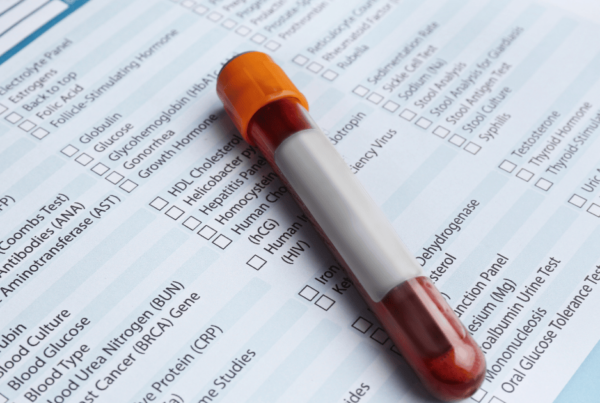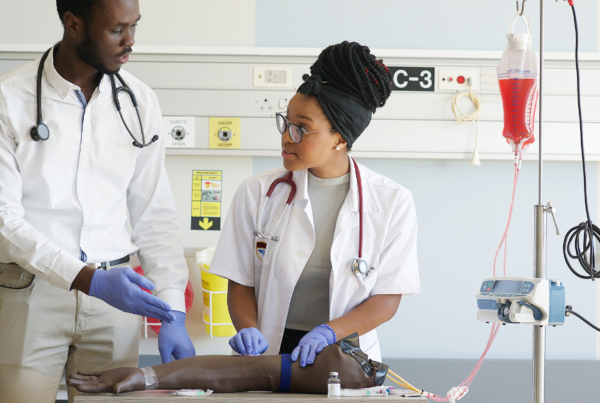Phlebotomy plays a pivotal role in healthcare, but what is phlebotomy exactly? Phlebotomy is the process of drawing blood from veins. It provides vital medical information. It is usually for medical tests, donations, or treatments. It’s a key healthcare procedure. It gives vital insights into a patient’s health.
This article explains all you need to know about phlebotomy. It will explain its role in healthcare and what happens during a blood draw. This article is for you. It is for phlebotomists and patients. It covers the profession, the procedure, and career opportunities.
| Key Takeaways: |
| Phlebotomy is the process of withdrawing blood for diagnostic, therapeutic, and research purposes. |
| Skilled phlebotomists ensure the safety and precision of blood draws using sterile techniques. |
| Blood samples from phlebotomy are vital for diagnosing and managing many health issues. |
| Phlebotomy has evolved from crude methods to advanced, science-based techniques. |
Understanding Phlebotomy: The Basics
What is phlebotomy?
Phlebotomy is a medical procedure. It withdraws blood from a vein using a sterile needle. This procedure seems simple. But, it is vital in modern healthcare. Blood samples from phlebotomy provide vital information for doctors. They help in diagnosing, managing, and preventing diseases.
The purpose of blood draws includes:
- Diagnosis: Identifying conditions such as anemia, infections, and hormonal imbalances.
- Monitoring: Managing chronic conditions such as diabetes, high cholesterol, and heart disease.
- Screening: Checking for health risks like high blood sugar or cholesterol.
- Treatment Evaluation: Tracking how effective medications or therapies are in treating specific conditions.
For those unfamiliar with it, phlebotomy is important. Knowing this can ease fears and make the experience less stressful.
The Role of Phlebotomy in Modern Medicine
Phlebotomy is vital in modern healthcare. Blood tests often first diagnose health issues. Blood samples provide critical data. They’re needed for checkups, tests, and disease prevention.
Diagnostic Importance
Phlebotomy helps physicians gather accurate data about a patient’s internal health. Healthcare providers can analyze blood samples. This can uncover hidden illnesses, check disease progression, and adjust treatments. Blood test results often guide a patient’s medical strategy.
Therapeutic Phlebotomy
Certain medical conditions use phlebotomy as a therapeutic intervention. Therapeutic phlebotomy removes excess red blood cells or iron from the blood. It is often used to manage:
- Hemochromatosis: A condition where excess iron builds up in the body.
- Polycythemia Vera: A disorder causing the overproduction of red blood cells.
- Sickle Cell Disease: is a genetic condition. It causes red blood cells to be abnormally shaped.
- Porphyria Cutanea Tarda: It causes a buildup of certain chemicals in the body. This leads to skin problems.
Therapeutic phlebotomy helps by removing blood on a regular basis. It maintains optimal blood composition and prevents complications in these conditions.
Phlebotomy Procedure: What to Expect
For patients, understanding the phlebotomy procedure is key to minimizing anxiety. Here’s a step-by-step breakdown of what happens during a typical blood draw.
1. Registration and Identification
When you arrive at a healthcare facility, the staff will first ask you to register. The healthcare provider will verify your identity and perform the tests.
2. Positioning and Vein Selection
The phlebotomist will position you in a chair or on a bed designed for comfort. They will then identify a vein, usually in your arm. They will use a tourniquet to make the vein more visible.
3. Cleaning and Needle Insertion
The phlebotomist will use antiseptic to clean the spot. They will insert a sterile needle with precision into the selected vein. You may feel a brief pinch, but the discomfort is usually minimal.
4. Blood Collection
After placing the needle, collect blood into labeled vials or tubes. Depending on the tests required, the phlebotomist may draw multiple vials.
5. Needle Removal and Bandage Application
After drawing enough blood, the phlebotomist will remove the needle. They will then apply a small bandage or gauze to the puncture site.
The entire process usually requires less than 10 minutes. If you feel discomfort, dizziness, or anxiety, the phlebotomist can help.
Who Performs Phlebotomy?
Trained healthcare professionals known as phlebotomists perform phlebotomy. They undergo rigorous training to learn the safe techniques for drawing blood. Phlebotomists are often the first healthcare workers patients meet during lab work. They play a critical role in patient care.
Phlebotomy Training and Certification
To become a phlebotomist, you must complete a training program that covers:
- Not possible to remove the adverb.
- Venipuncture techniques (the process of drawing blood from a vein).
- Infection control and safety protocols.
- The proper handling, labeling, and transport of blood samples.
- Patient interaction and communication skills.
Organizations like the NPA and ASCP offer phlebotomy certification. It boosts the credibility and expertise of phlebotomists.
Potential Risks and Side Effects of Phlebotomy
Phlebotomy is usually safe. But, it has some risks and side effects.
- Discomfort at the puncture site: Mild pain or bruising may occur.
- Dizziness or lightheadedness: This risks those who fear needles or have fainted before.
- Bruising: It is common for slight bruising to occur, but it usually resolves on its own.
- Fainting: Rarely, some patients may faint during the procedure. This is more likely in those who are anxious or sensitive to blood draws.
If you have concerns during a blood draw, tell your phlebotomist. They can make the process more comfortable.
The Evolution of Phlebotomy: From Bloodletting to Modern Medicine
Phlebotomy has a rich history. It dates back to ancient bloodletting. People believed that removing blood could cure many ailments. Over time, scientific advances shifted phlebotomy. It became a precise diagnostic procedure based on biology.
Modern Phlebotomy Techniques
Today’s phlebotomy methods are much better. They use sterile equipment, like needles, vacutainers, and special blood collection tubes. These innovations ensure safe, efficient blood sample collection. They prevent contamination and cut patient discomfort.
Phlebotomy as a Career Path
For those seeking a healthcare career, phlebotomy is a stable, rewarding path. Hospitals, clinics, blood banks, and labs need phlebotomists.
Phlebotomy Training and Certification Pathways
Aspiring phlebotomists usually complete a short training program. It continues from a short period to an extended duration. This training includes classroom instruction and practical experience in venipuncture. Individuals must pass a test to become licensed phlebotomists after completing the program.
Job Outlook and Salary Expectations
The demand for phlebotomists is growing. Healthcare facilities need skilled professionals to perform diagnostic blood draws. The BLS expects phlebotomist jobs to grow by 8% in the next decade. The average annual salary is about $41,810.
FAQs About Phlebotomy
What can I expect during a blood draw?
Blood draws are usually performed in a manner that is swift and causes little discomfort. You can expect: registration, a comfortable position, a tourniquet, cleaning the site, needle insertion, blood collection, and a bandage.
Are there any risks associated with phlebotomy?
Phlebotomy is a safe procedure with minimal risks. Side effects may include needle site discomfort, dizziness, bruising, and fainting (rare).
How can I become a phlebotomist?
To become a phlebotomist, complete a training program. Many institutions offer these programs. These programs usually take a few months. They teach you the skills for safe and efficient blood draws.
Where can I learn more about phlebotomy?
Many resources are available online and in libraries. Additionally, healthcare organizations and professional associations can provide valuable information about the profession.
Why Choose Phlebotomy Now School?
At Phlebotomy Now School, we provide top phlebotomy training. It will prepare you for a successful career. Our programs teach practical skills and provide real-world experience. You’ll be ready to face the healthcare industry’s challenges.
What We Offer:
- Flexible Learning: Hybrid classes to fit your schedule.
- Hands-On Training: Our curriculum focuses on real-world practice. It will provide you with the necessary tools to excel.
- Career Support: We provide exam prep and career services to help you start your phlebotomy career.
Conclusion
Phlebotomy is more than drawing blood. It’s vital to healthcare. It plays a key role in diagnosis, treatment, and research. If you want a phlebotomy career or to prepare for a blood draw, understanding phlebotomy can help.
At Phlebotomy Now School, we aim to help you start a rewarding career in phlebotomy. Ready to take the next step? Enroll today. Begin your journey towards a rewarding healthcare profession!
Take the First Step Towards Your Phlebotomy Career!
If you’re interested in a rewarding career in phlebotomy, contact Phlebotomy Now School today. We’ll be happy to answer your questions and help you get started on your path to success.


